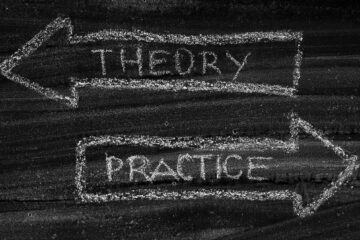COVID-19 and Our Schools: The Real Challenge

When the full scope of the COVID-19 crisis became clear earlier this year, most states shut down their schools for a few weeks, hoping that the crisis would pass quickly. Colleges and universities did the same. Now schools are shut down for the rest of this academic year and many are wondering what to do about next fall. While many cling to the hope that there will be a quick return to the state we were in before the pandemic, it is becoming clearer by the day that that is very unlikely. It is far more likely that government at every level will be trying to find the right balance between opening up the economy and controlling this virus for years to come.
But even if the pandemic were to be stopped in its tracks by next fall, COVID-19 will have condemned a large fraction of an entire generation to life on an economic precipice and, by doing so, compromised the economic prospects of the whole country. You will say that this is unnecessarily alarmist. But it is not. I will explain.
Before COVID-19, a large proportion of our students, concentrated among those from low-income families, were leaving fourth grade having great difficulty decoding written words on a page and even greater difficulty comprehending simple sentences. The statistics show that these students’ chances of ever catching up to their peers is almost nil. In each grade, the vocabulary used by the teacher and by the authors of the books they are asked to read contain more and more words they do not understand, which makes it harder and harder for them to follow what is going on in class. By the fourth grade, the bottom 10 percent on the NAEP survey are six grade levels behind of the top 10 percent. The students who are far behind struggle harder and harder, falling further and further behind as they go through the upper grades. Many drop out as soon as they can. The others graduate, many reading at a sixth-grade level or even lower, unable to take credit bearing courses in their community college, and qualified only for very low-wage jobs.
There is every reason to believe that there is a similar problem for mathematics. The study of mathematics entails learning a set of topics each of which is prerequisite for the next topic. The topics are often laid out through the grades in order, with particular topics taught at particular grade levels. But what if the student did not understand the topic when it was taught? Too bad. So here, too, the student who did not get it will find all that follows a mystery, falling further and further behind with each passing year.
And that was where so many of our young people were before COVID-19. When the virus hit, the wealthier suburbs already had well-developed software platforms on their internal networks connected to high speed internet they could use to communicate with their students and their parents in their homes. Many of these parents were highly educated professionals and managers who were at home with their kids. Each member of the family had their own device that they could connect to the internet whenever they wished. The teachers did short videos presenting the key concepts and procedures they wanted the students to master and gave the students assignments related to those concepts and procedures, often in the form of projects that they could do at home, sometimes solo and sometimes with groups of other students, using ZOOM or a similar platform and using the internet to gain access to a wide range of other resources. Their parents were there to coach them and help them manage their online work. The teachers, because they did not have to be ‘on stage’ all day, could spend much more time than before the pandemic using the internet to work one-on-one with students who needed extra help. A strong case could be made that, with the important exception of elementary school students generally and special education students specifically, little was lost for these well-to-do students and something might even have been gained.
Now consider the students from inner-city schools, outlying rural schools and inner-ring working-class communities. In many of those communities, as many as 20 percent of the students could not be found by the school authorities trying to contact them. In homes where there was an internet connection, there was often only one device available for connection and it had to be shared among everyone in that home. While most of the professionals and managers in the wealthy communities could continue to work full time at full pay and be at home to provide high-level support to their children, that was hardly the case in these low-income communities. Many parents lost their jobs because the restaurants, shops and service businesses were forced to close. Many have had to choose between working in COVID-19 hot spots or losing their unemployment insurance. Many lost their jobs because they had to stay home with their children and could not work from home. Most important, many of these low-income parents had themselves been poorly educated, did not have experience working online, and were in no position to provide the kind of high-level support to their children that their highly educated peers in the wealthy suburbs were providing to theirs.
The bottom line? The gap in performance between the students in the wealthy suburbs and the students in our working-class suburbs and poverty-stricken inner city and rural districts is about to explode. Students from low-income communities normally lose much more in measured achievement during the summer than students in the wealthier suburbs. That is over a period of two and a half months. Now add to that another four months. And add to that whatever will happen during the 2020-21 school year. If these kids were six grade levels behind their top U.S. peers before COVID-19, imagine how many grade levels behind they will be in its aftermath!
How are the schools responding to this? In many places, by suspending testing. Which will mean that you and I will have no way of knowing how badly these kids have been damaged by COVID-19. Until, that is, seventh graders who were third graders when the virus hit show up with second grade reading and arithmetic skills for classes using texts assuming that they can read at the seventh-grade level and have the prerequisite knowledge needed for seventh grade math topics and all these students are at sea, as if the teacher were speaking Greek. These students, I might point out, will be embarrassed and, as a result, will act out, justifiably angry. The ranks of special education students will grow as will the ranks of school dropouts, and after that, the ranks of the unemployed, the sick, the homeless and the incarcerated.
You may think that this is a plea for providing more money to schools serving students from low-income communities. Yes, it is, but much more than that will be needed to address the problems I am describing. The students whose situation I was describing were in deep trouble long before COVID-19. In fact, our whole school system was in deep trouble. High school students in more than thirty countries are better in math. The students in some of these countries leave high school two to three years ahead of ours. The problems are not just with our students from low-income families. There is a smaller proportion of U.S. students at the top level of the OECD-PISA performance spectrum than is the case in the top-performing countries. Over the last 20 or more years, the performance of our high school students has been absolutely flat, but the cost after accounting for inflation has more than doubled.
Here is crux of the matter. Even before COVID-19, robotization and automation have been taking the jobs of ever-greater shares of our high school graduates and school dropouts, the very people from our working-class and poverty-stricken communities I just described. What we have now is the impending convergence of two trends. One is a precipitous fall in the performance of the students in the bottom half of the achievement spectrum in our schools caused by the COVID-19 and the other is the reaction of employers to the virus. We can expect employers to invest more than they had previously planned to invest in automating their jobs, replacing people in those jobs with machines that can do the work, don’t need to be paid, don’t require social distancing, can’t sue because of inadequate protection from the virus and can be upgraded with a software fix. The collision of these two trends could cripple our economy and leave millions unable to earn a living.
More money will be needed, but we cannot do it just with money. What we need is a new education system, a system that is vastly more efficient and vastly more powerful than the one we are using now.
That is not a pipe dream. At least a dozen countries are educating their students to far higher standards than we are educating ours, for no more money than we spend. So we know it can be done. But these countries are not resting on their laurels. They, too, see the future coming and are redesigning their systems for the high-tech, globally-integrated society that is developing all around us. Our organization, NCEE, has been working with a group of them, helping them think about the next step in the evolution of their systems.
It turns out that they are working their way toward a form of education that echoes aspects of the design our best systems came up with to cope with the virus: the use of technology to present complex information for students in compelling but brief segments, to be used by students in combination with well-designed projects involving individual students as well as groups of students, with the students going back and forth between theory and practice, constantly applying what they are learning about the concepts they are studying to real-world problems in a way that enables them not just to think more effectively, but to relate to others effectively and manage their own growth and development more effectively.
U.S. districts started moving in this direction as an emergency measure, improvising as they went. What they ended up with is typically rough. But the direction is right. If the United States mounted an extraordinary effort to reinvent our schools, to make the same kind of effort to apply what has been learned about how students learn, about the strategies used by the countries whose students are now so far ahead of ours, and about how to create powerful learning environments with the emerging intelligent technologies, we could leap from far behind to the front of the pack. Our students could once again lead the world in education. Our workforce could once again be the best educated in the world. The United States, which not so many decades ago, had the most equal distribution of income in the world, could once again lead the world in broadly shared prosperity. And our citizens could have the education and skills they need to decide the most complex and fraught issues the world has ever faced.
Any state could choose to adopt this agenda. The State of Maryland, with our help, has gone a long way down this road with landmark legislation passed in the waning hours of a legislative session abruptly terminated by the virus. The Governor vetoed the legislation along with many other spending bills because of the financial challenge brought on by COVID-19, but the veto is likely to be overridden when the legislature next meets.
But the agenda laid out here should be—must be—a state and national agenda. As I write this, a national struggle for the soul of our country is being waged in the wake of the murder of George Floyd. That battle will be won or lost in our schools. The fact is that poorly educated Whites and poorly educated Black Americans have suffered grievously from an education system that has failed both. For Black people, the failure of this institution joins the failure of many other institutions, shutting off opportunity after opportunity that would have been theirs if we had lived up to the promise made in the Declaration of Independence. For other people of color—and indeed, for many poor White people—our failure to educate them and their children to the standard demanded by the modern global economy has meant a loss not only of income, but their pride, their independence and their dignity. Our ability to hold this country together, to provide broadly shared prosperity to everyone, to maintain our democracy, depends on our ability to redesign our public education system from the ground up.
The immediate needs are obvious. If the states, on their fiscal knees as a result of COVID-19, do not receive federal funding, the schools will suffer miserably and those schools serving the poor will suffer most. Those of our citizens who do not have access to high speed internet need it and need it now. Students who do not have access to their own devices for distance learning need them and need them now. This is de minimus, the least we can do, but it does not begin to address the scope of the challenge ahead.
Individual states must follow Maryland’s lead, committing themselves to do whatever it takes to match the performance of students in their state to the performance of students in the countries with the world’s best education systems. That will not happen at the scale needed without strong federal leadership.
I suggest that a task force of eminent Americans be created to engage Americans everywhere in the redesign of their schools — to meet the future head on. I do not mean that we need a federal education system. We do not. What we need is national leadership. We need images of what we should aspire to, images that the states can run with. Yes, the federal government can help, but the states must in the end, build their own systems.
In my next blog, I will address higher education, job training and the idea of a lifelong learning system, considered not as a slogan, but as a real, living, breathing system.





